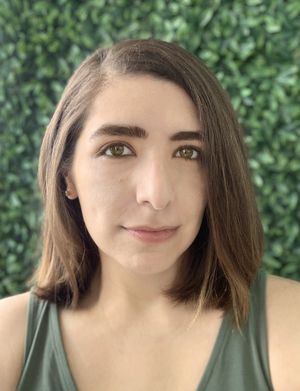SMITHSONIAN TROPICAL RESEARCH INSTITUTE
An Indigenous Language Book Presents the Unique Biodiversity of a Panamanian Island
Botanist Alicia Ibañez hopes the book, which presents new data on the tiny island’s endemic flora and fauna in both Spanish and Ngäbere, will increase awareness of the importance of preserving its biodiversity
:focal(1137x856:1138x857)/https://tf-cmsv2-smithsonianmag-media.s3.amazonaws.com/filer_public/b2/25/b22595e6-c737-4dc0-841c-caa0335e8f92/1_isolated_gem.jpg)
Off the coast of Panama’s Bocas del Toro province, lies the small Caribbean island Escudo de Veraguas. Its lush forests, eye-catching beaches and crystalline waters are home to a great number of plants and animals that occur nowhere else in the world.
Researchers who explored the island’s rich biodiversity of fauna and flora for three years published some of their most striking results.
Led by botanist Alicia Ibañez, a collaborator with the Panamanian Centre for Social Action (CEASPA), the project “Estudios de biodiversidad en la isla Escudo de Veraguas” began in 2017, organized by the Ramsar Regional Center for the Western Hemisphere (CREHO), with financial support from Panama’s National Secretary of Science, Technology and Innovation (SENACYT).
Project researchers included zoologists Diorene Smith Cabellos, who studied the pygmy sloth, and Rafael Samudio and Jorge Luis Pino, who focused on small mammals; neuroendocrinologist Ioana Chiver, who studied bird behavior; herpetologist Abel Batista; botanists Rodolfo Flores, who researched the general flora with Ibañez, and Alberto Taylor, who studied the Zamia plant; and historian Francisco Herrera. They worked with university students, many of them from the comarca, and local monitors.
/https://tf-cmsv2-smithsonianmag-media.s3.amazonaws.com/filer_public/4d/97/4d97ff6c-4f52-42f0-9ef2-df43528464ca/3_isolated_gem.jpg)
“Our intention is to use this information to develop an effective and sustainable management plan for this protected area.”
Ibañez edited the book, Isla Escudo de Veraguas: Estudiando juntos su biodiversidad in Spanish, and Ngutduä mrende kä Degäbotdä: jatötdigatda gwaire jodron nire bätägä ngwarbe botdä in Ngäbere, presented on Jan. 27th via a Facebook Live event on CEASPA’s site.
“Our intention is to use this information to develop an effective and sustainable management plan for this protected area, to regulate economic and tourist activities, and to involve the communities in the comarca and their authorities,” said Ibañez.
Small communities traditionally inhabit parts of Isla Escudo de Veraguas for seasonal fishing. However, a recent tourism boom brought too many people to the island, putting a strain on environmental protection.
The island is also spawning territory of marine turtle species such as the carey turtle, Eretmochelys imbricata, and the baula turtle, Dermochelys coriacea, often targets of illegal poaching.
Unregulated logging also affects both land and marine ecosystems.
An entire chapter of the book is dedicated to Zamia hamannii, an endemic plant.
“Zamia is one of the most ancient plants in existence. This one evolved on the island after it was separated from the mainland approximately 10,000 years ago,” said Ibañez.
Another chapter focuses on the pygmy three-toed sloth, Bradypus pygmaeus, an endangered species found only in Escudo de Veraguas. Biologist Diorene Smith Cabellos, a member of the conservation initiative EDGE (Evolutionary Distinct and Globally Endangered) presented her findings.
/https://tf-cmsv2-smithsonianmag-media.s3.amazonaws.com/filer_public/21/86/218699cc-9df5-447f-a3ea-8a134925f2e0/4_isolated_gem.jpg)
“We hope that what we have found on the sloth’s behavior, what it eats, what trees it uses as refuge, and which zones of the island it favors, will help us find better ways to protect it and its habitat,” Smith Cabellos said.
Meanwhile, Ioana Chiver, post-doctoral fellow and STRI affiliate, spearheaded bird research. She and her team compared the mating calls and display behavior of the golden-collared manakin (Manacus vitellinus amitinus), a subspecies found solely in the island, to those of its mainland counterpart.
“The manakins on the island are significantly larger than manakins from populations on the nearby coast, and usually larger species have lower frequency calls,” Chiver explained. “This is supposed to be because larger males have larger vocal tracts and can produce lower frequency sounds. But we found that, despite their large size, male calls consist of higher frequency sounds. This could be because of the different environment, for example if higher frequency sounds transmit better when there is a constant low frequency background noise from waves, or if females prefer higher frequency sounds, or both.”
The island’s endemism was influenced by how it became connected and separated from the mainland through time. STRI marine paleobiologist Aaron O’Dea and STRI intern Max Titcomb contributed topographic maps showing how changing sea levels modified the island’s coastline throughout the millennia.
/https://tf-cmsv2-smithsonianmag-media.s3.amazonaws.com/filer_public/84/ee/84eefdc0-4a85-47e4-92c4-e14cb4e09e5c/5_isolated_gem.jpg)
“I would say that Escudo de Veraguas has been connected to the mainland at least 10 times in the last 2 million years, probably more,” said O’Dea.
The book, in both Spanish and Ngäbere, the language spoken in Comarca Ngäbe-Buglé, promotes diversity in science, and increases the visibility of the island and its communities.
“We had many students from the Comarca, and realized that young people are losing their language,” said Ibañez. “This is a small contribution to encourage these young students to learn their language and preserve it.”
The book is being distributed to collaborators and libraries, universities, research centers, local authorities, authorities of the comarca and national authorities. It is also available by email at [email protected], for a $20 donation, to fund researchers to travel to the Comarca and distribute books.
“It will not be for sale or available for international distribution,” Ibañez clarified, who worries that doing so might promote tourism to the island, further unbalancing the already fragile ecosystem.
/https://tf-cmsv2-smithsonianmag-media.s3.amazonaws.com/filer_public/6d/9d/6d9d1ade-5faa-407b-9019-a56a028acd94/2_isolated_gem.jpg)
“Before this project, we already knew that Escudo de Veraguas is a center of endemism. But now we found many potentially new species that could also be endemic; adding up to 90 percent incidence of endemism, higher than other islands, which makes it very important for the country and the world,” Ibañez affirmed. “We plan to continue to study the island, especially to describe these potentially new species to determine whether they are truly different from the ones in the mainland.”

